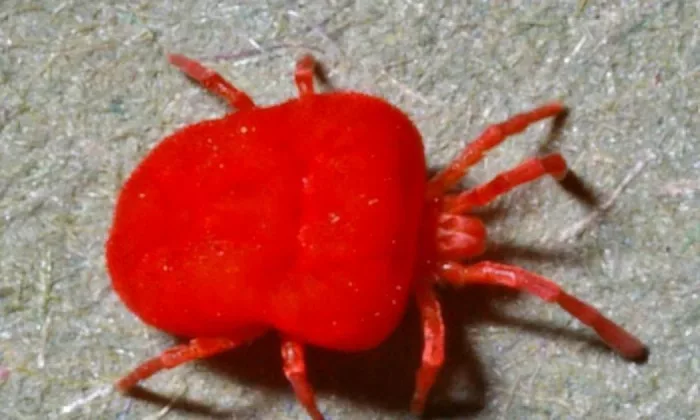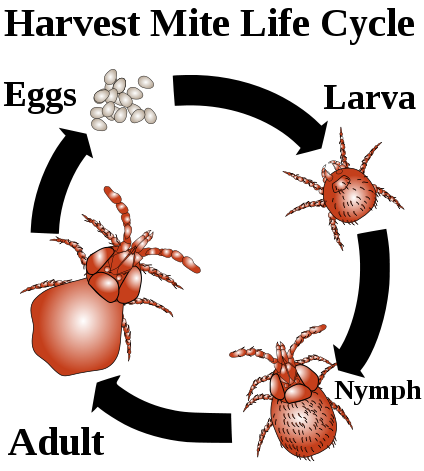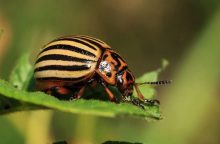The infamous harvest mites may be hiding in your garden too

Maybe this has happened to you too. You had a picnic on the lawn (especially at the end of summer) and a few hours later a really unpleasant and itchy rash appeared on your lower abdomen or in your intimate area.
It is not an allergic reaction, but unfortunately you have encountered the larvae of the harvest mite (Trombicula autumnalis), sometimes also called just the mite. These little bugs are usually harmless to us as adult mites and their nymphs feed on small arthropods living in the soil but their six-legged larvae also enjoy bigger prey.
Where can you meet the harvest mite?
Well, they are really agile and quick. They get quickly to the surface of the soil and wait for any food that may come along. That is the unlucky creature which is passing by. They do not climb trees or bushes, so you are save there… As the prey is passing by, they bite its skin and start injecting a special substance that corrodes the subcutaneous tissue, which they suck on.
After being bitten, the host organism often shows signs of an allergic reaction such as itchy blisters and lesions. These creatures are problem not only for humans, but also for cats or dogs. Individuals with weak immunity are most at risk.
If you do nothing, the larva will fall off by itself after about three days as it needs soil to transform into the second larval stage. If this happens at home, you don’t have to worry about infesting your apartment. After all, they are only about 0.2mm long, so you probably will not even see it.

What to do if you suffer from thrombocytosis
It is almost impossible to remove these tiny larvae from skin as you don’t see them. However, you can alleviate the itching using suitable treatments, for example Fenistil, liquid powder, etc. The most effective defence is prevention.
How can you protect yourself from the harvest mite larvae?
Unfortunately, the harvest mite is rather resistant to all chemicals. The only suitable solution is to eliminate tall vegetation in your garden. You should get rid of weeds and too high grass etc. If your garden has already been infested by the harvest mite, use sulphur-based treatments , which are also effective against other types of mites. When you use chemicals, observe the recommended concentrations and pay attention to protection of other crops – especially to nearby crops. You may apply the first chemical treatment from mid-July until the end of August, and then approximately each 10 days.
August is the month where you may get infected the most. Try using good clothes if you work in your garden and avoid risky areas and locations . By the way, these risky locations often coincide with areas with a high concentration of ticks. As soon as you get home shower thoroughly. Use good soap and wash all clothes at high temperature. This will greatly reduce the risk of thrombocytosis.
Preview photo: commons.wikimedia.org

Gardening is my hobby, I have a lot of experience and I am happy to share it.








0 comments